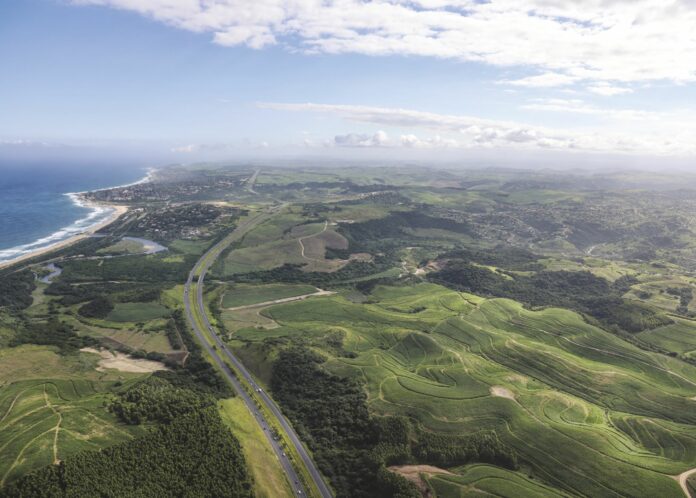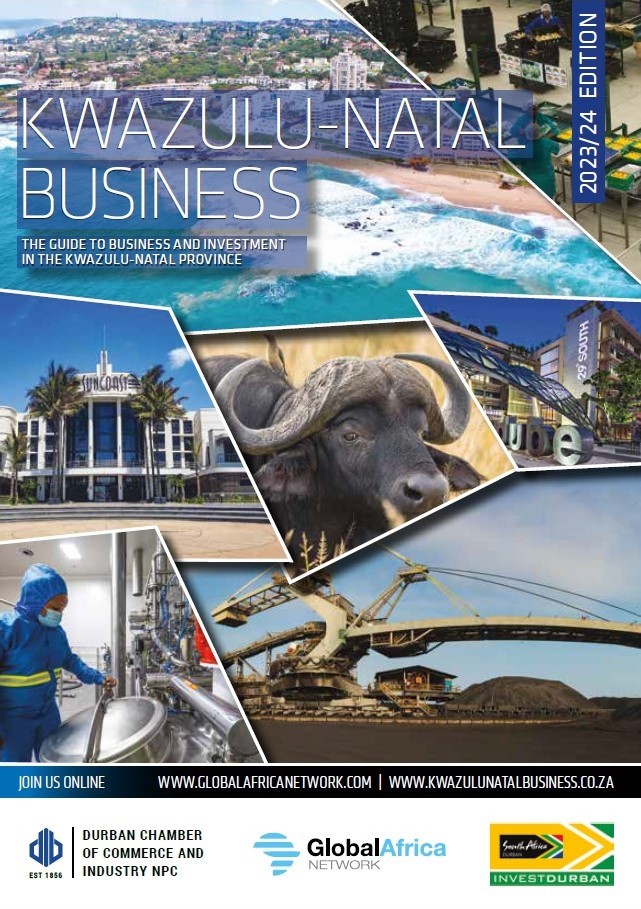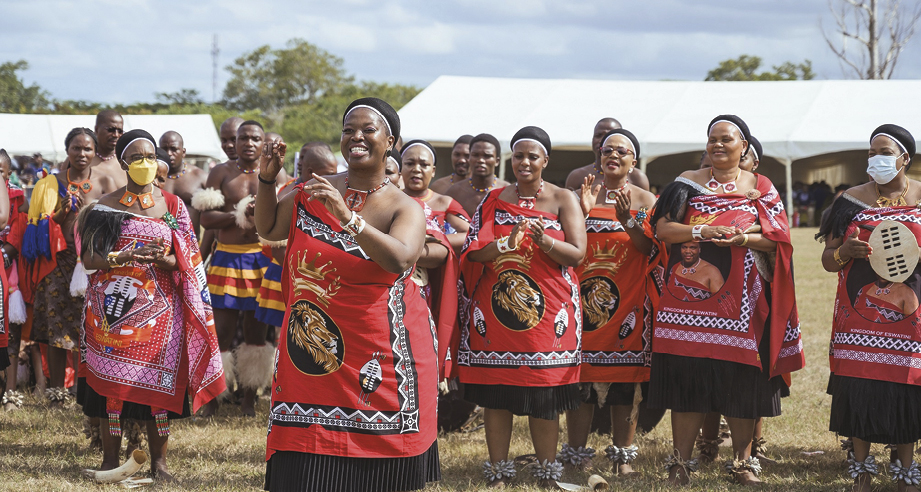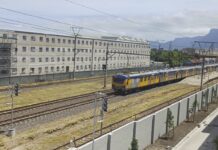
The Provincial Government of KwaZulu-Natal has created a KZN Energy War Room. Over and above the interventions into energy efficiency of government buildings and investments in things like solar panels, and plans to continue rolling out electricity connections to previously unserviced households, the administration intends turning Richards Bay into an energy hub.
This ambition received a big boost in 2023 with the decision by the National Energy Regulator of South Africa to approve Eskom’s application to build a 3 000 MW gas power station at Richards Bay.
Battery storage has made a debut in the province as well. South Korean firm Hyosung Heavy Industries has signed on to implement the Eskom project to create a battery energy storage system, in this instance in the uMgungundlovu District Municipality.
In the 2023 State of the Province Address, Premier Nomusa Dube-Ncube said that, in addition to the R97-billion Eskom project, the following facilities would be established at the deepsea port:
- Mabasa Energy and Fuels, R10-billion
- NFE BGE Gas Supply, R25-billion
- Phakwe RBGP, R34-billion
An earlier announcement on the energy front by President Cyril Ramaphosa that private investors could generate up to 100 MW without having to go through a tangled web of licence procedures was a boon for the province’s larger companies. The likes of Sappi and Mondi produce great quantities of biomass waste and all of the province’s sugar producers are potentially generators of electricity. Many of them already are producing power for their own use, now they can sell it to the grid.
The signing of a long-term contract for energy supply by Eskom and South32 for its Hillside Aluminium smelter was another very welcome step in the energy field. The deal expires in 2031.
The first steps in a move by national government to partner with the private sector in boosting efficiency at ports were taken in 2022: deals were signed at the Port of Durban and at Richards Bay.
In the oil and gas sector, the big issue of what is going to happen to SAPREF, South Africa’s largest crude oil refinery which suspended operations in 2022, remains unresolved. The provincial government is planning to have a meeting with the refinery’s shareholders and other levels of government to try to find a way of resolving the matter.
The first steps in a move by national government to partner with the private sector in boosting efficiency at ports were taken in 2022: deals were signed at the Port of Durban and at Richards Bay.
In 2023, these first steps became a giant leap when International Container Terminal Services Inc (ICTSI), a Philippines-based port operator, was announced as the preferred partner for a joint venture (JV) to run the Durban Container Terminal with Transnet.

ICTSI operates in 20 countries and employs more than 11 000 people. Transnet will hold 50% plus one share in the JV for 25 years, with an option to extend to 30 years. From the initial list of 17 potential partners, ICTSA was eventually chosen from a shortlist of six. Part of the plan for Durban Container Terminal Pier 2 is to increase traffic in such a way that it will be able to increase its handling capacity from the present 2.9-million TEUs (two-million 20-foot equivalent units) to 11-million TEUs by 2032.
The 2022 deal involved a 15-year concession for the loading of grain at one of Durban’s agricultural terminals was won by Afgri, one of South Africa’s biggest agricultural firms. Afgri will deal with the operation and maintenance of all landside operations, and the deal includes a similar arrangement at East London. The other two terminals in Durban are operated by SA Bulk Terminals and Bidvest Bulk Terminals.
Special Economic Zones
The provincial government is working on an investment pipeline, through the Special Economic Zones (SEZs), of R22-billion. The SEZs at Richards Bay and King Shaka International Airport (the Dube TradePort) are key components of the strategy and are now well-established nodes of investment.
Milestones have been reached in the plan for creating further SEZs to focus on leather and textiles. A business case has been completed by units within the provincial government and land at Ezakheni (Ladysmith) in the uThukela District has been identified and secured. Dube TradePort will be the SEZ operator and R780-million in investments has been pledged by companies keen to relocate to the SEZ. To spread the benefits of the SEZ, the concept of “The Textile Belt” will be followed.
The corridor approach will leverage comparative advantages of various regions in the clothing and textile value chain. This belt will start from Newcastle and link Ladysmith, Mooi River, Pietermaritzburg, Hammarsdale, Durban, Isithebe and the Dube TradePort to the Richards Bay Industrial Development Zone.
Infrastructure upgrades at Madadeni, Isithebe and Ezakheni have been completed, which went some way to creating jobs and which will create a more conducive environment for investors.
Tourism is a key sector in the KwaZulu-Natal economy and provides livelihoods to many thousands of families in urban and rural areas. The closing of borders brought real hardship to many areas. A number of flights have been resumed to King Shaka International Airport by the likes of Turkish Airlines and a new flight has been inaugurated by SA Airlink, connecting the province to Zimbabwe.
Economic sectors
 The province’s existing infrastructure, good soils and fine weather provide a solid base for a varied economy. KwaZulu-Natal has significant capacity in heavy and light manufacturing, agro-processing and mineral beneficiation, all of which is supported by South Africa’s two busiest ports (Richards Bay and Durban), the country’s most active highway (the N3), a modern international airport and pipelines that carry liquids of all types to and from the economic powerhouse of the country around Johannesburg in the interior.
The province’s existing infrastructure, good soils and fine weather provide a solid base for a varied economy. KwaZulu-Natal has significant capacity in heavy and light manufacturing, agro-processing and mineral beneficiation, all of which is supported by South Africa’s two busiest ports (Richards Bay and Durban), the country’s most active highway (the N3), a modern international airport and pipelines that carry liquids of all types to and from the economic powerhouse of the country around Johannesburg in the interior.
Sappi’s dissolving pulp mill at Umkomaas south of Durban is one of the province’s most significant industrial sites as it produces huge quantities of a material that is used in viscose staple fibre, which in turn is used in clothing and textiles. Mondi is the province’s other global giant in forestry, paper and packaging. Toyota and Bell Equipment are dominant players in the automotive sector.
Many banana farmers on the KwaZulu-Natal South Coast have started planting macadamias. In one case, half of a big farm has been converted to cultivating the popular nut. “Along the KZN South Coast, we enjoy a subtropical climate that creates a fertile environment that supports a variety of crops in the agricultural sector,” explains Phelisa Mangcu, CEO of South Coast Tourism and Investment Enterprise (SCTIE).
The province’s existing infrastructure, good soils and fine weather provide a solid base for a varied economy.
Regions
KwaZulu-Natal has 10 district municipalities and a metropolitan municipality, the most of any province in South Africa. In economic terms, the province offers diverse opportunities.
Southern region
This area is the province’s most populous. The city of Durban has experienced booms in sectors such as automotive, ICT, film and call centres. The promenade now reaches all the way to the harbour and the Point development will benefit.
Major investments are taking place at the Port of Durban. The Container Terminal will be expanded on the back of an investment by an international port operator. Durban’s conference facilities are well utilised, but many opportunities still exist in chemicals and industrial chemicals, food and beverages, infrastructure development and tourism. Further south, Margate’s airport and Port Shepstone’s beachfront are assets.

Western region
Also known as the Midlands, this is a fertile agricultural region which hosts the popular annual Royal Show. It produces sugar cane, fruit, animal products, forestry and dairy products.
Pietermaritzburg is the provincial capital and home to a major aluminium producer along with several manufacturing concerns, including textiles, furniture, leather goods and food. The city has good transport links along the N3 national highway, excellent schools and a lively arts scene. The Midlands Meander is a popular tourist destination.
Eastern region
Although most of this area is rural, Richards Bay is one of the country’s industrial hotspots because of its coal terminal, port and aluminium smelters.
The Richards Bay Industrial Development Zone is a major economic node and mining is an important sector. The other major urban centre is Empangeni which has several educational institutions. The King Shaka International Airport is adjacent to the Dube TradePort.
Northern region
The economic powerhouse is Newcastle in the north-west: coal mining, steel processing and manufacturing are major activities. Some old coal mines are being reopened by new coal companies to cater for the country’s power stations’ demand for the fuel. Game farms, trout fishing and hiking are part of an attractive package for tourists, and Zululand is a popular destination for cultural experiences. The region is rich in Anglo-Boer War history which includes battle sites such as Islandlwana and Rorke’s Drift.








